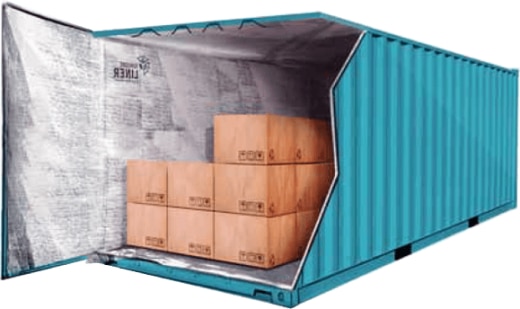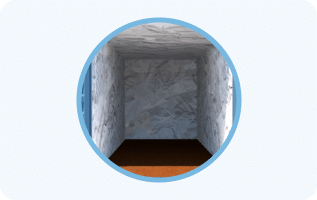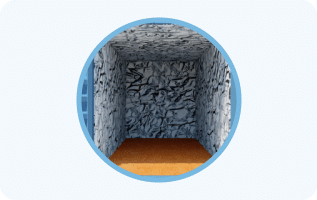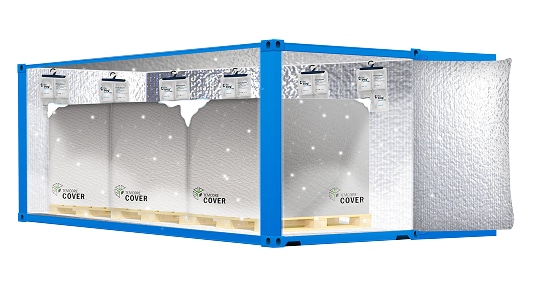Extreme temperatures can cause significant damage to temperature-sensitive cargo during transit, leading to spoilage, product degradation, and financial losses. Temcore thermal container liners provide a cost-effective and efficient solution for stabilizing shipping container temperatures, reducing the risk of thermal shocks and temperature fluctuations that can affect sensitive cargo.
Designed with high-quality thermal insulation technology, Temcore liners create a fully sealed environment that helps prevent container rain, moisture buildup, and contaminants from compromising shipments. Whether you're shipping pharmaceuticals, perishable goods, vaccines, or industrial materials, Temcore ensures optimal thermal protection throughout the supply chain

Temcore thermal container liners are engineered for maximum protection, providing recyclable, insulated packaging solutions for global shipping.
Temcore’s thermal container liners provide high-quality thermal protection and insulated packaging for a wide range of shipping boxes and pallet covers.


Built with polyethylene, foil liner, and corrugated insulation materials, Temcore thermal box liners ensure even temperature distribution.

The aluminum foil outer layer deflects solar radiation, reducing heat transfer and maintaining a consistent temperature range.

Temcore liners create a food-grade sealed environment that blocks dust, mold, and bacteria, making them ideal for pharmaceuticals, perishable foods, and sensitive cargo.

Designed for easy installation, the insulation liners fasten securely to container rings, forming a tight and recyclable protective barrier.
Temcore thermal container liners act as a temperature stabilizer, forming a sealed interior inside shipping containers to prevent thermal shocks, condensation, and extreme temperatures from damaging cargo.
By incorporating thermal insulation, these liners maintain a consistent temperature range, reducing reliance on refrigeration and protecting sensitive products from temperature excursions. They are compatible with thermal box liners, pallet covers, and bubble wrap, ensuring comprehensive cold chain stability.
For shipments requiring insulated packaging, Temcore offers thermal container liners in custom sizes, accommodating both high cube containers and standard shipping formats.


Temcore thermal container liners are ideal for:
Have a question? We’re here to help.
© 2025 Eurolog Packing Group